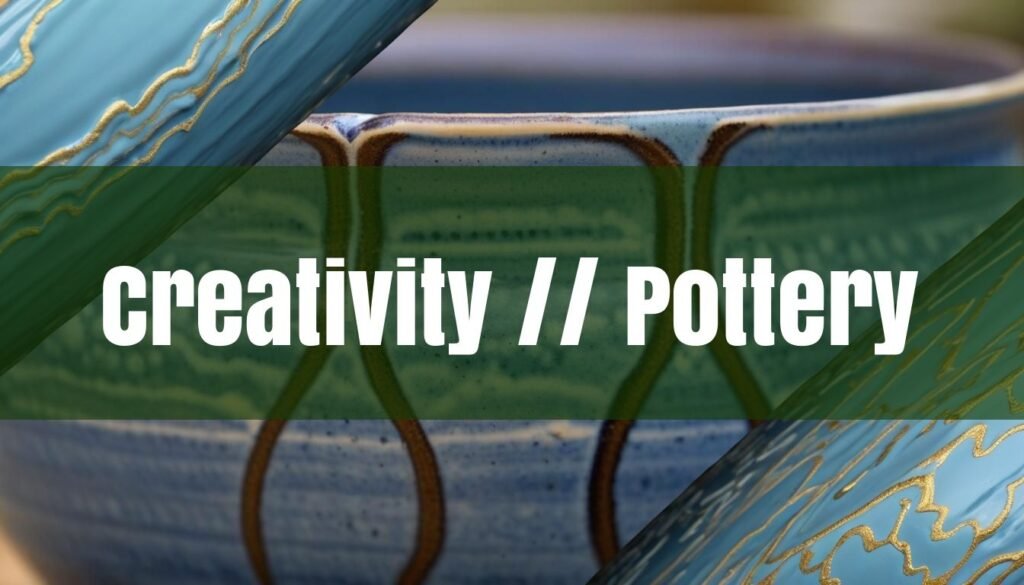Pottery offers an incredibly diverse range of possibilities for creation, limited only by your imagination and skill. From functional everyday items to purely decorative pieces, the journey with clay is both rewarding and deeply personal. Whether you’re just starting out or have some experience under your belt, understanding the properties of different clays and mastering fundamental techniques will open up a world of creative expression.
Things to Make Out of Pottery Clay
One of the first considerations when embarking on a pottery project is selecting the right type of clay. Earthenware clay, known for its workability and rich colors, is often favored by beginners. It’s easy to manipulate and ideal for hand-building techniques like pinch pots, coil building, and slab construction. Pinch pots, formed by simply pressing and shaping a ball of clay with your fingers, are a fantastic starting point for understanding the feel of the material. Coil building involves rolling out clay into long, rope-like coils and layering them to create walls, while slab construction uses flat sheets of clay to assemble forms, offering more structured results.
Stoneware clay, prized for its durability and versatility, is an excellent choice for functional items like bowls, mugs, and vases. Its ability to withstand higher firing temperatures makes it ideal for pieces intended for everyday use. Porcelain, with its delicate appearance and translucent quality, is often reserved for more experienced potters due to its challenging nature. However, the exquisite results it yields make it a worthwhile pursuit for those seeking refined and intricate artworks. For those without access to a kiln, air-dry clay presents a convenient alternative, hardening naturally without firing. While not as durable as fired clay, it’s perfect for creating decorative items and exploring basic pottery techniques. For more information, see clay types.
Essential Pottery Tools and Techniques
To bring your pottery visions to life, a few essential tools are necessary. A wire cutter is indispensable for slicing clay and removing finished pieces from the wheel or work surface. Sponges are crucial for adding and removing water, smoothing surfaces, and maintaining a clean workspace. Ribs, flat tools made of wood, plastic, or metal, are used for shaping and smoothing clay on the wheel, while scrapers help remove excess clay and refine forms. Loop and ribbon tools, with their sharpened steel edges, are perfect for trimming and carving details, especially when the clay is leather-hard. Needle tools are versatile for cutting, piercing, scoring, and adding fine details. Beyond these basics, wooden modeling tools, brushes, calipers, and a well-organized toolbox will further enhance your pottery practice.
Mastering the art of wedging is also essential to remove air bubbles from the clay, ensuring a smooth and consistent texture. This process involves kneading the clay to create a uniform moisture content and eliminate pockets of air that can cause explosions during firing. For a deeper dive, consider mastering wedging techniques. Another fundamental technique is centering the clay on the pottery wheel. This requires patience and practice to achieve a stable, wobble-free base for your piece. Applying even pressure and maintaining proper body positioning are key to mastering this skill.
Common Mistakes and Decorative Techniques
Beginners often encounter common pitfalls, such as using clay that is too dry or too wet. Clay that lacks sufficient moisture can be difficult to center and shape, while overly saturated clay can collapse easily. Achieving a balance is crucial for successful pottery making. Another mistake is not securing joints properly when hand-building, leading to structural weaknesses. Scoring and slipping, which involves scratching the surfaces to be joined and applying a mixture of clay and water, create a strong bond between the pieces. Rushing the drying process can also result in cracking or warping. Allowing your piece to dry gradually, covered loosely with plastic, prevents uneven shrinkage and minimizes the risk of damage.
Once you’ve mastered the basics, you can explore a wide array of decorative techniques to personalize your pottery. Carving, stamping, and adding textures are great ways to enhance the surface of your pieces. Underglazes, applied before glazing, offer vibrant colors and intricate designs. Slip trailing, using a squeeze bottle to apply slip, creates raised patterns. Wax resist, where wax is applied to prevent glaze from adhering, allows for contrasting areas of color and texture. Experimenting with different techniques and materials will help you develop your own unique style and bring your artistic vision to life.





